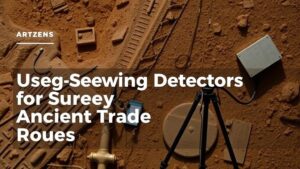Unearthing Lost Tools and Weapons in Old Mining Camps
Unearthing Lost Tools and Weapons in Old Mining Camps
The remnants of old mining camps provide a fascinating insight into the lives of the prospectors and miners who sought fortune in often perilous conditions. Unearthing lost tools and weapons in these camps not only helps historians and archaeologists piece together stories from the past but also reveals technologies and methodologies that were once innovative. This article explores the significance of these discoveries, the methodologies employed in recovering these artifacts, and notable examples from various mining sites.
The Historical Context of Mining Camps
Mining camps emerged during significant gold and silver rushes in the 19th and early 20th centuries. e temporary settlements served as hubs for miners and their families, often attracting individuals from various backgrounds. The goods they used ranged from rudimentary tools to sophisticated equipment, and weapons for protection against both wildlife and rival miners.
Statistically, the U.S. Geological Survey notes that between 1848 and 1855, the California Gold Rush resulted in the establishment of over 400 mining camps. Many of these locations fell into disuse as resources were depleted, leaving behind an assortment of tools and artifacts awaiting discovery.
Significance of Unearthing Lost Tools and Weapons
The artifacts uncovered in old mining camps illuminate not just the technological capabilities of the time but also the socio-economic conditions and daily realities faced by miners. Tools such as pickaxes, pans, and shovels tell stories of labor, while weapons such as revolvers and rifles illustrate the violence and fear present in such environments.
- Understanding Technology: Tools and equipment can reveal advancements in mining technology. For example, the discovery of hydraulic mining gear suggests a shift towards more efficient methods.
- Social Dynamics: The presence of weapons can indicate conflicts within camps, highlighting issues such as theft, territorial disputes, or rivalries.
- Cultural Insights: Items like personal belongings provide a glimpse into the daily lives, beliefs, and practices of miners.
Methodologies in Recovering Artifacts
The excavation of old mining camps typically employs systematic archaeological techniques that ensure the integrity and context of artifacts are preserved. Key methodologies include:
- Site Surveys: Initial assessments of a mining site involve geographical mapping and assessments of potential artifact locations.
- Stratigraphic Excavation: Layers of soil are excavated methodically to preserve the chronological context of findings.
- Artifact Analysis: Once uncovered, tools and weapons are analyzed using various techniques, such as radiocarbon dating and material composition studies, providing information about their age and usage.
Case Studies of Notable Discoveries
Several mining camps across North America have yielded significant artifacts, showcasing the breadth of tools and weapons recovered.
The Bodie Mining Camp, California
One of the most well-preserved ghost towns, Bodie was a thriving mining camp during the late 1800s. Archaeological efforts have uncovered thousands of items, including tools like rock drills and miners’ lamps, and personal artifacts that illuminate the daily lives of those who lived there. One particularly notable find was a collection of firearms, representative of the lawlessness that characterized the camp at its peak.
The Cripple Creek District, Colorado
The Cripple Creek mining district is an example of a site that provided rich deposits of gold and led to rapid population growth. Archaeological studies in the area have led to the discovery of intricate mining tools, like a 19th-century miner’s pick that showcases the craftsmanship of the time. Also, weapons have been found that date back to conflicts between rival factions in the late 1800s, providing context for the socio-political climate of the era.
Challenges and Ethical Considerations
While unearthing tools and weapons can provide significant historical insights, it also presents ethical dilemmas. There are challenges in ensuring the preservation of the site and obtaining permissions, especially when private land is involved or when items are culturally sensitive. Also, the potential for artifact looting poses a considerable risk.
Historically, the “treasure hunter” mentality can lead to the destructive extraction of artifacts. Ethical approaches involve working with local communities and adhering to archaeological standards that prioritize education and conservation over profit.
Actionable Takeaways
- Engage in local archaeological groups or history societies to gain insights into mining history and responsible excavation methods.
- Support preservation efforts for historic mining sites, especially those threatened by modern development.
- Advocate for the implementation of laws aimed at protecting historical sites and artifacts.
Unearthing tools and weapons from old mining camps is more than an exercise in archaeology; it connects us to a pivotal chapter in human history and sheds light on the relentless pursuit of opportunity during tumultuous times. Each artifact serves as a testament to the resilience, ingenuity, and struggles faced by those who worked in these rugged landscapes.


